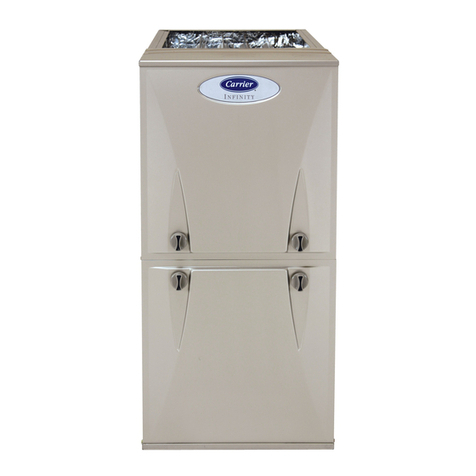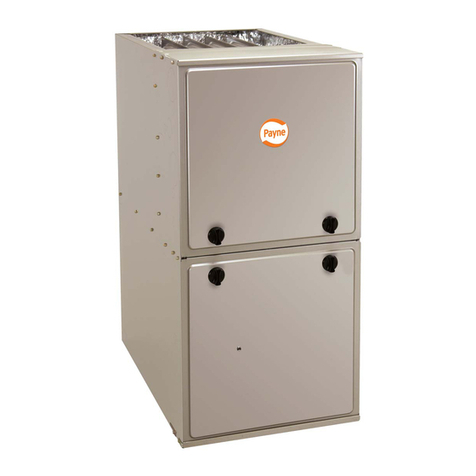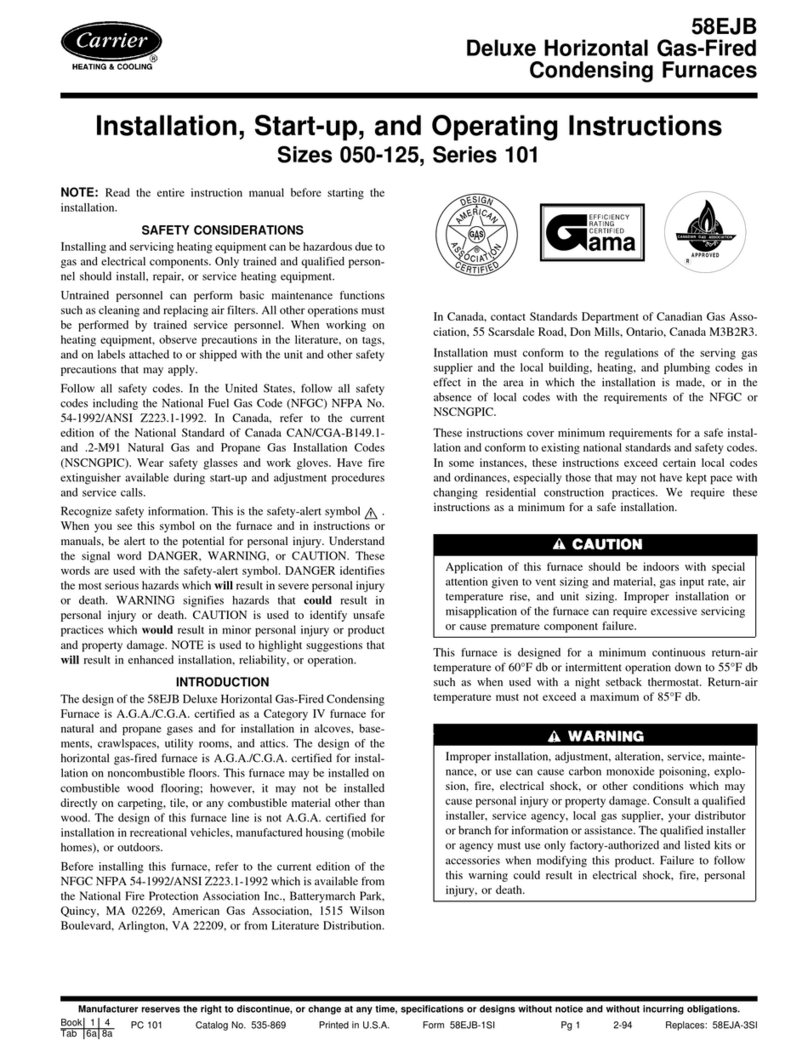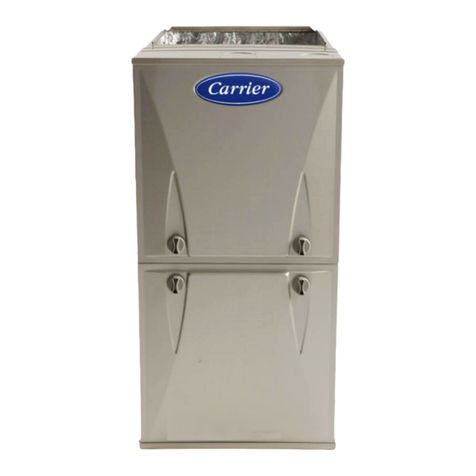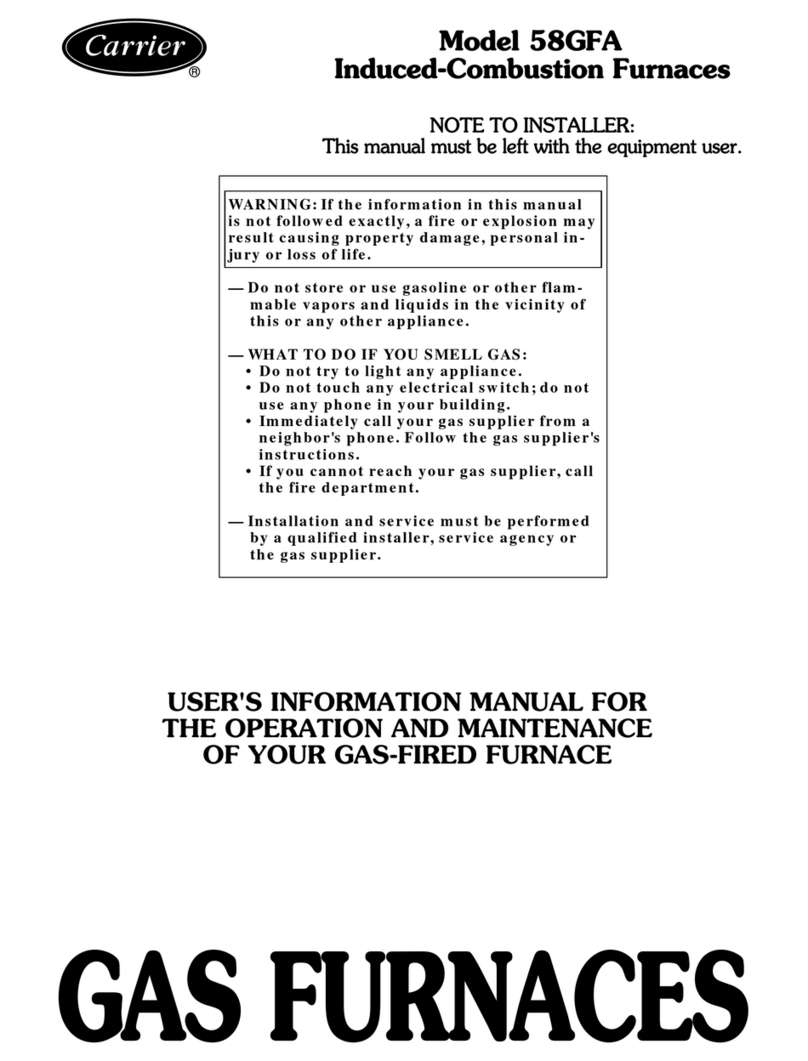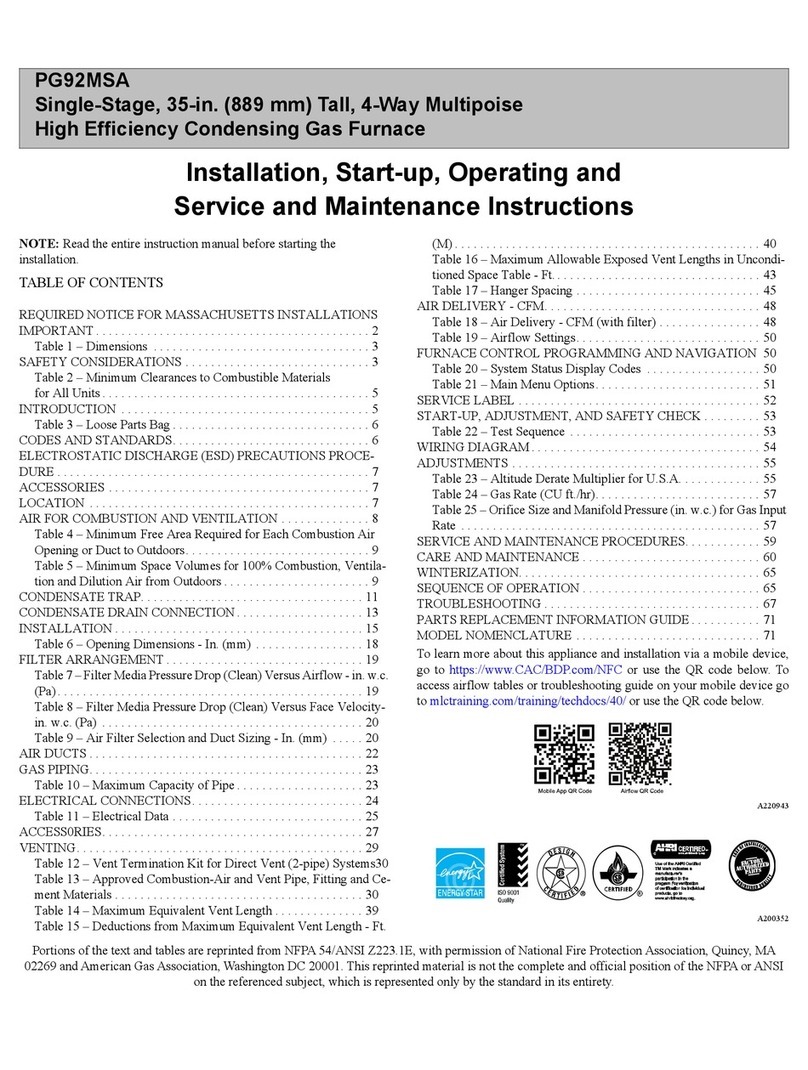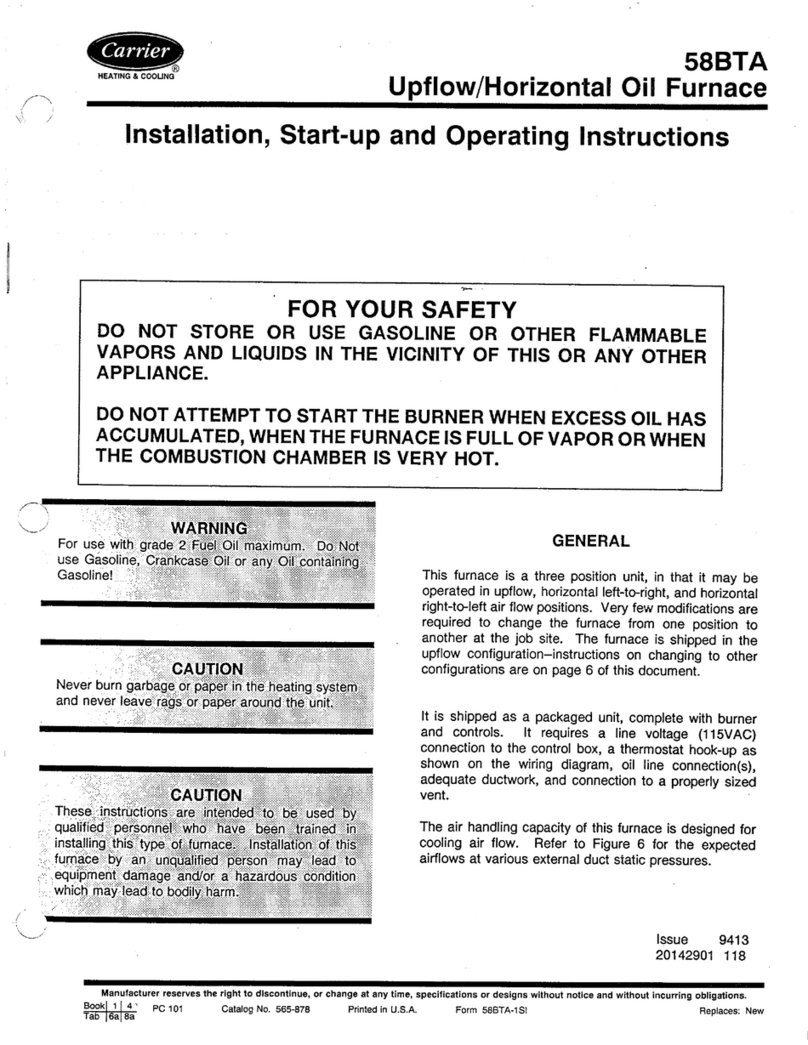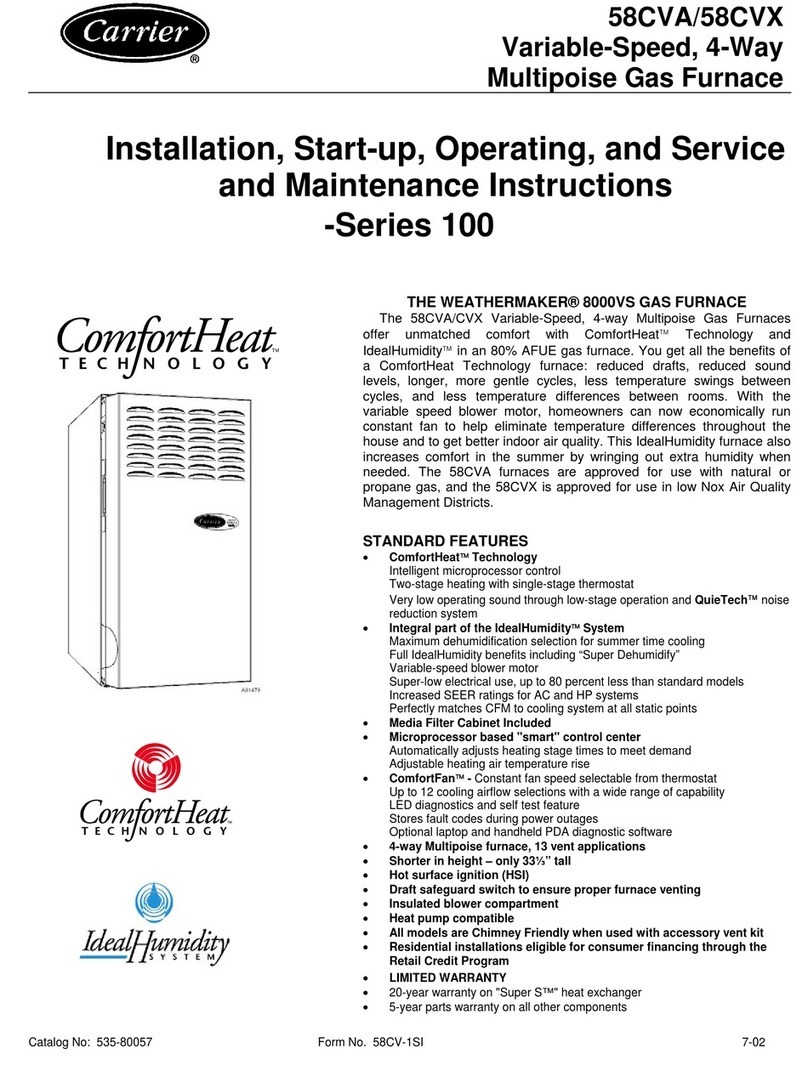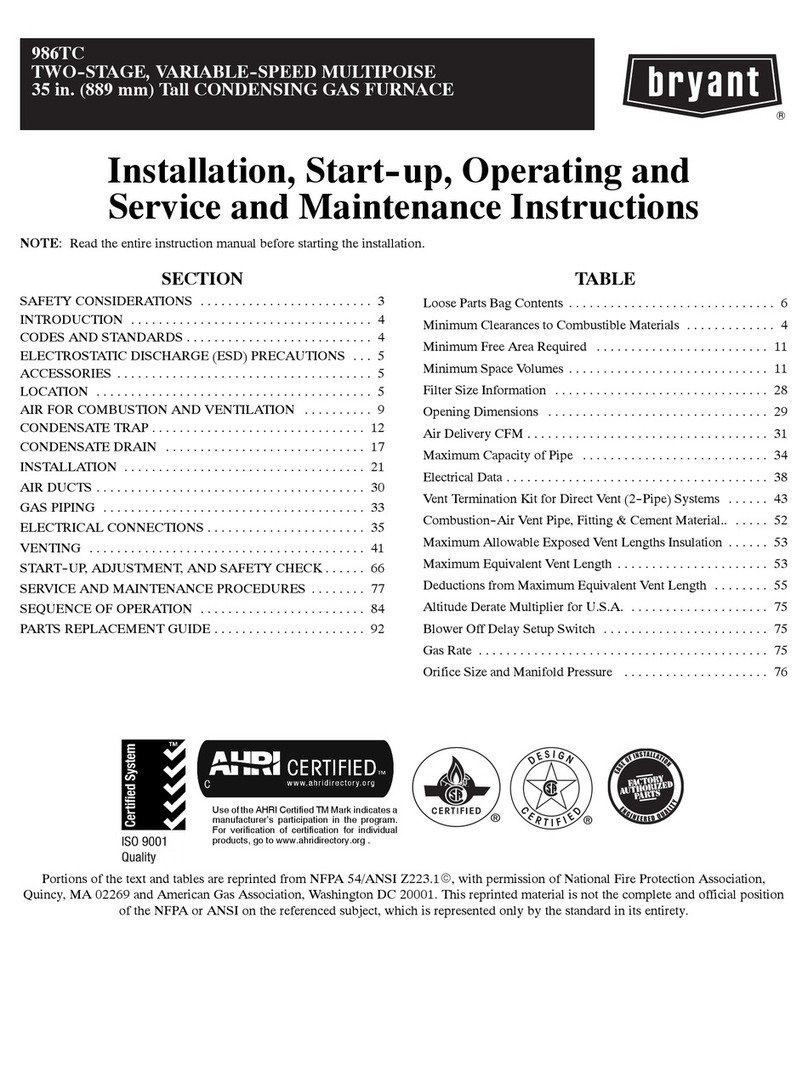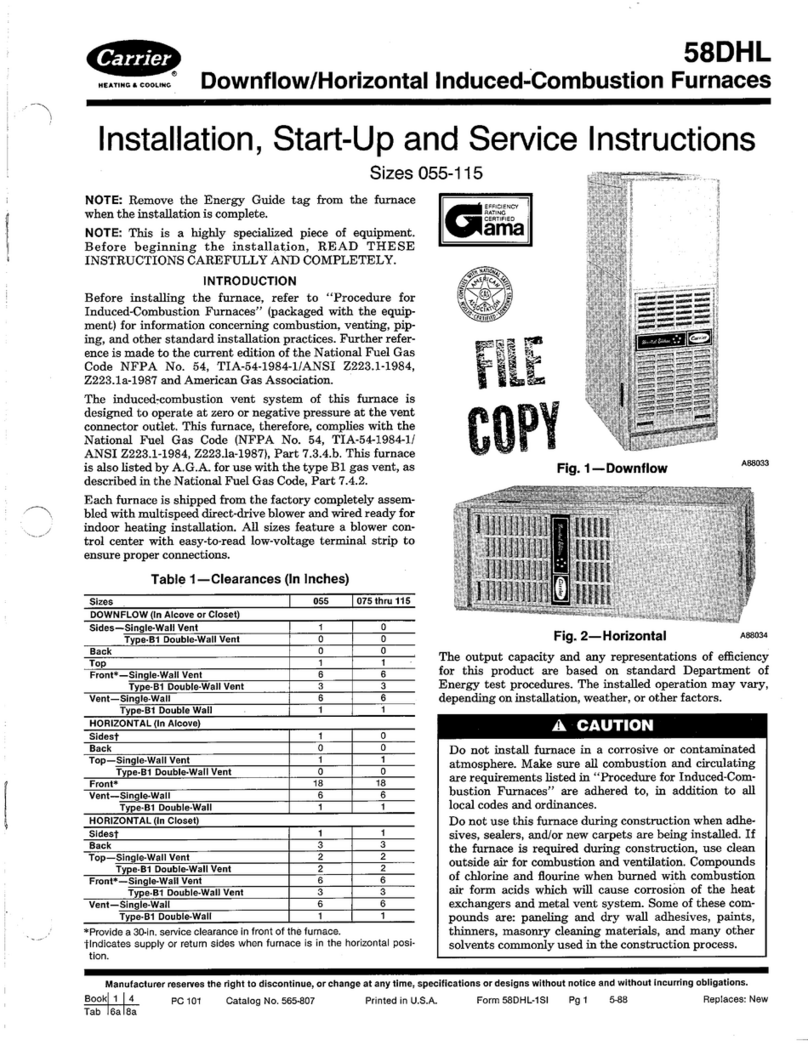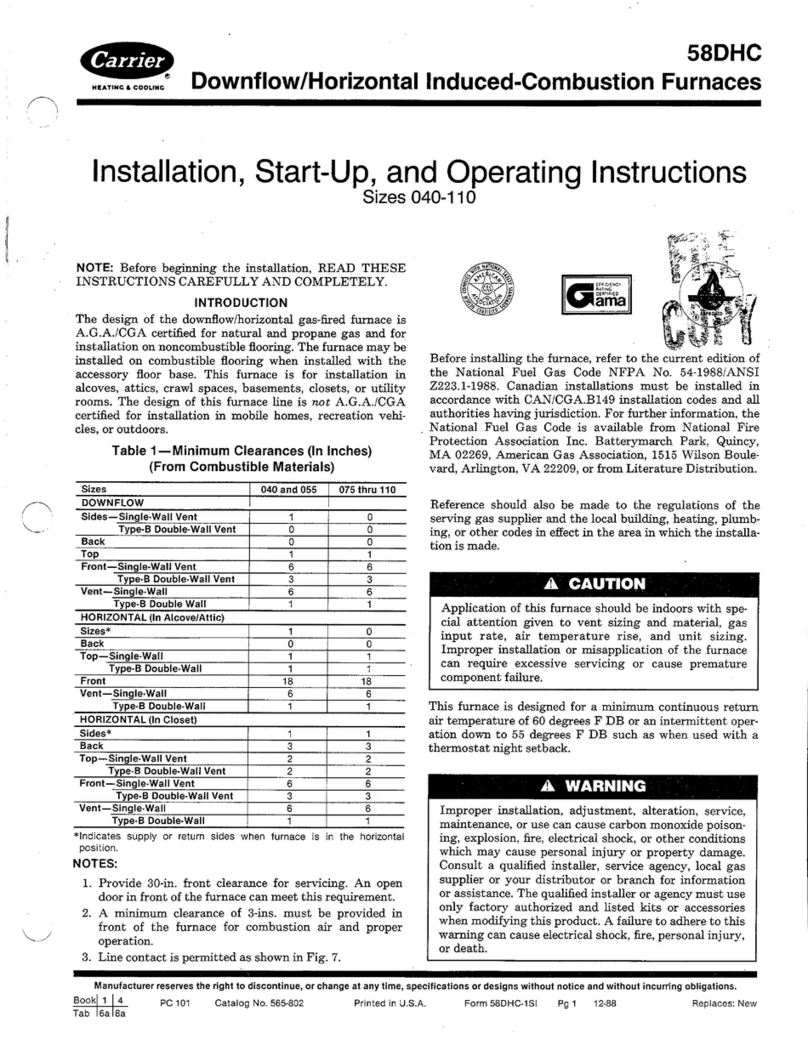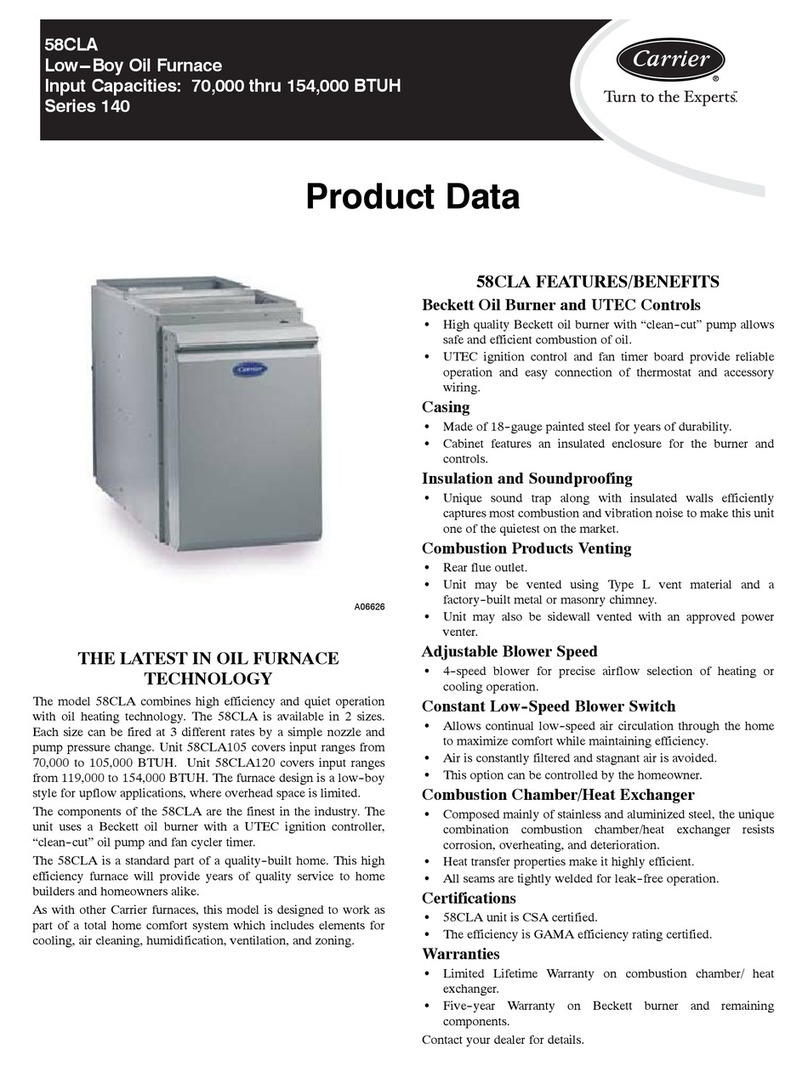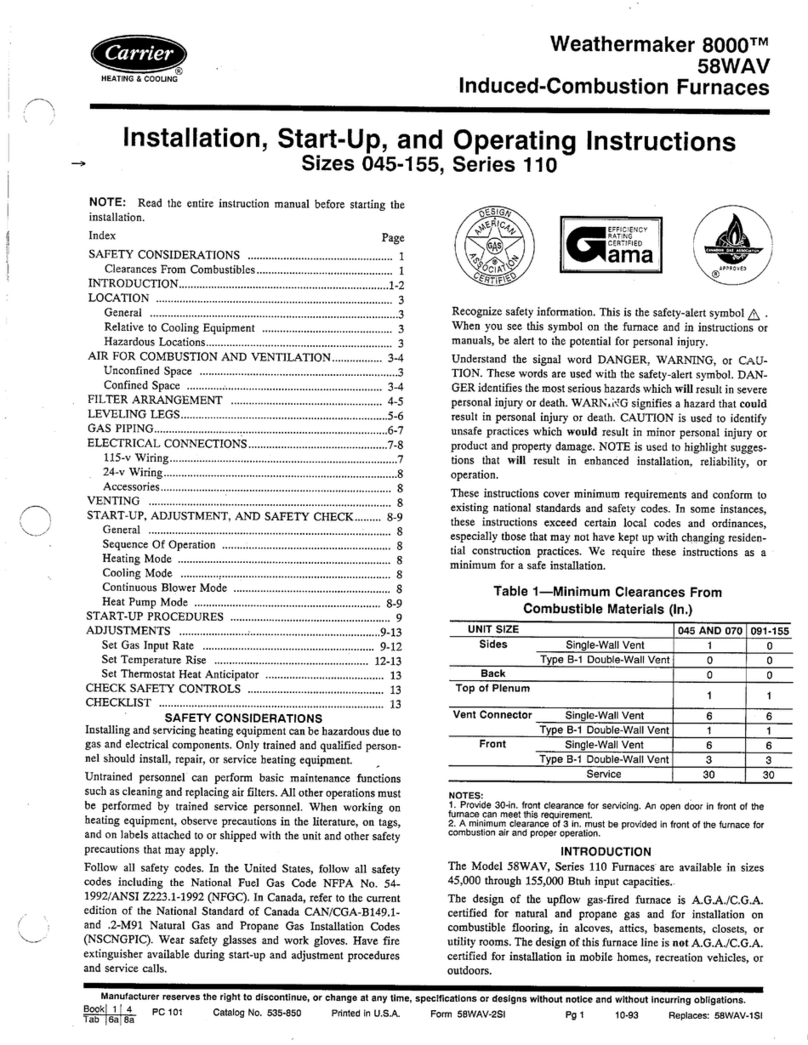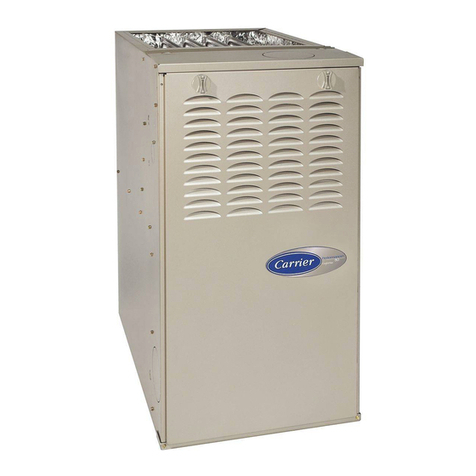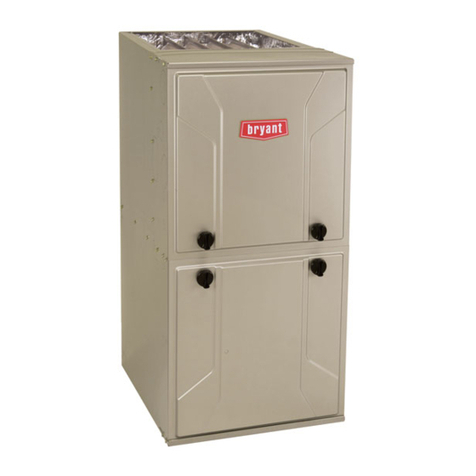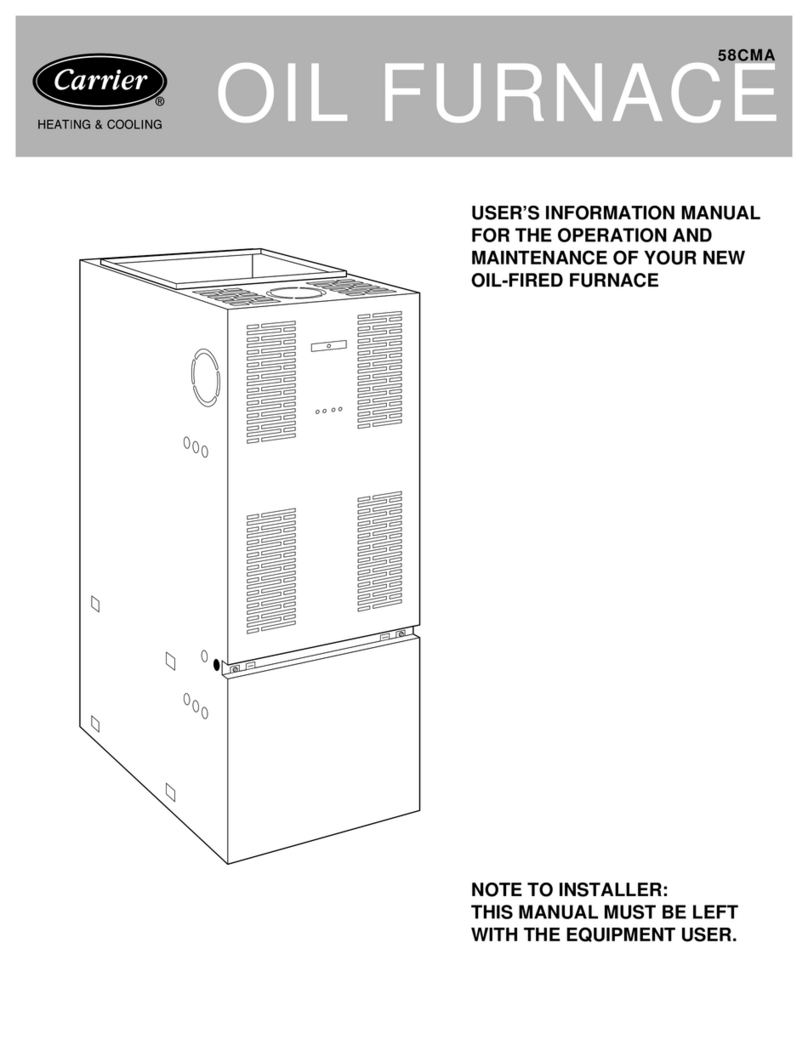PERSONAL INJURY AND/OR PROPERTY DAMAGE
HAZARD
hnproper use or installation of this furnace may cause
premature fl]rnace component failure.
This gas lurnace may be used %r heating buildings under
construction provided that:
-The furnace is permanently installed with all electrical
wiring, piping, venting and dncting installed according to
these installation instructions. A return air duct is pa)vided,
sealed to the lm'nace casing, and terminated outside the space
containing the lurnace. This prevents a negative pressure
condition as created by the circulating air blower, causing a
flame rollout and/or drawing combustion products into the
structure.
-The lilrnace is controlled by a thermostat. It may not be "hot
wired" to provide heat continuously to the structure without
thermostatic controh
-Clean outside air is provided %r combustion. This is to
minimize the corrosive el'li_ctsof adhesives, sealers and other
construction materials. It also prevents the entrainment of
drywall dust into combustion air, which can cause flmling
and plugging of furnace components.
-The temperature of the return air to the li]rnace is maintained
between 55°F (13°C) and 80°F (27°C), with no evening
setback or shutdown. The use of the furnace while the
structure is under construction is deemed to be interndttent
operation per our installation instructions.
-The air temperature rise is within the rated rise range on the
lurnace rating plate, and the gas input rate has been set to the
nameplate value.
-The filters used to clean the circulating air during the
construction process nmst be either changed or thoroughly
cleaned prior to occupancy.
-The furnace, ductwork and filters are cleaned as necessary to
remove duwall dust and construction debris li"om all HVAC
system components after construction is completed.
-Verily proper limmce operating conditions including igni-
tion, gas input rate, air temperature rise, and venting accord-
ins to these installation instructions.
FIRE HAZARD
Failure to follow this warning could result in personal injury,
death andk)r property damage.
Do not install the furnace on its back or hang furnace with
control compartment facing downward. Sali_ty control opera-
tion will be adversely afli:cted. Never connect return-air ducts
to the back of the furnace. (See Fig. 6.)
LOCATION RELATIVE TO COOLING EQUIPMENT
The cooling coil n]ust be installed parallel with, or on the
downstream side of the unit to avoid condensation in the heat
exchangers. When installed parallel with the furnace, dampers or
other flow control n]ust prevent chilled air li"om entering the
furnace. If the dampers are manually operate& they must be
equipped with means to prevent operation of either unit unless the
damper is in the full-heat or lull-cool position.
BACK
A02054
Fig. 6--Prohibit Installation on Back
AIR FOR COMBUSTION AND VENTILATION
Provisions lot adequate combustion, ventilation, and dilution air
nmst be provided in accordance with:
U.S. installations: Section 8.3 of the NFGC, Air %r Combus-
tion and Ventilation, and applicable provisions of the local
building codes.
Canadian installations: Part 7 of the NSCNGPIC, Venting
Systems and Air Supply lbr Appliances, and all authorities
having jurisdiction.
FURNACE CORROSION HAZARD
Faihn'e to lbllow this caution may result in furnace damage.
Air [or combustion nn]st not be contaminated by halogen
compounds_ which inch]de fluoride, chloride, bromide_ and
iodide. These elements can corl:ode heat exchangers and
shorten furnace lili:. Air contaminants are flmnd in aerosol
sprays, detergents, bleaches, cleaning solvents, salts, air
li"esheners, and other household products.
CARBON MONOXIDE POISONING HAZARD
Faih]re to follow this warning could result in personal injury
or death.
The operation of exhaust fans, kitchen ventilation fans,
clothes dryers, attic exhaust fans or fireplaces could create a
NEGATIVE PRESSURE CONDITION at the li;rnace.
Make-up air MUST be provided li)r the ventilation devices, in
addition to that required by the fln'nace. Reli:r to Carbon
Monoxide Poisoning Hazard warning in venting section of
these instructions to determine if an adequate amount of
make-up air is available.
The requirements %r combustion and ventilation air depend upon
whether or not the lurnace is located in a space having a volume
of at least 50 cubic licet per 1,000 Btuh input rating lbr all gas
appliances installed in the space.
Spaces having less than 50 cubic li_et per 1,000 Btnh require
the OUTDOOR COMBUSTION AIR METHOD.
Spaces having at least 50 cubic li_etper 1,000 Btuh may use the
INDOOR COMBUSTION AIR, STANDARD or KNOWN-
AIR INFILTRATION METHOD.
Outdoor Combustion Air Method
1. Provide the space with sufficient air %r proper combustion,
ventilation, and dilution of flue gases using permanent hori-
zontal or vertical duct(s) or opening(s) directly comnmnicat-
ins with the outdoors or spaces that freely commmficate with
the outdoors.
